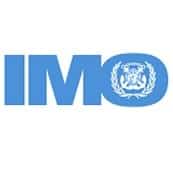
دانلود استاندارد IMO – International Maritime Organization
نحوه درخواست تکی استانداردهاي سازمان بین المللی دریانوردی

لطفا مشخصات استاندارد IMO – International Maritime Organization خود را با فرمت زیر به ایمیل ![]() ارسال بفرمایید و یا فرم درخواست استاندارد IMO – International Maritime Organization را در انتهای صفحه پر کنید.
ارسال بفرمایید و یا فرم درخواست استاندارد IMO – International Maritime Organization را در انتهای صفحه پر کنید.
| مشخصات استاندارد درخواستی IMO | به عنوان مثال |
| شماره استاندارد IMO | IMO IF110E |
| عنوان استاندارد IMO: | International Convention for the Safety of Life at Sea (SOLAS) – CONSOLIDATED EDITION, 2014 (Includes 2014, 2015 and 2016 Supplements) |
| زبان استاندارد آی ام او: | ENG |
| سال انتشار IMO: | 2018 |
| لینک استاندارد IMO: | https://www.techstreet.com/standards/imo-if110e?product_id=1884969 |
هزینه استاندارد IMO – International Maritime Organization
پس از ارسال درخواست، هزینه مطابق با تعداد استانداردهای IMO – International Maritime Organization درخواستی، به شما اطلاع داده می شود. هرچه تعداد استانداردهای درخواستی بیشتر باشد، هزینه هر استاندارد IMO – International Maritime Organization کمتر می گردد.
 فروش پکیج کامل استاندارد IMO – International Maritime Organization
فروش پکیج کامل استاندارد IMO – International Maritime Organization
پکیج کامل استاندارد IMO – International Maritime Organization و همچنین پکیج های ماهیانه و سالیانه IMO – International Maritime Organization مطابق با IHS ، با تخفیفات ویژه موجود می باشد. برای اطلاع از قیمتها و شرایط ویژه ایمیل بزنید.
لیست پکیج استانداردهاي سازمان بین المللی دریانوردی
IMO – International Maritime Organization
Established in 1948, the International Maritime Organization (IMO) is the United Nations agency responsible for improving maritime safety and preventing marine pollution from ships. IMO publications cover essential topics for the maritime and shipping industries. These include facilitation of travel and transport, cargoes, marine environment protection, marine technology, maritime safety and navigation and rescue. Techstreet is an authorized reseller of IMO standards in PDF format. Download your documents today.
فرم درخواست استاندارد IMO – International Maritime Organization: